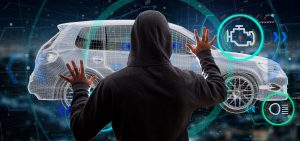Autonomous vehicles are susceptible to cyberattacks through various pathways, making cybersecurity a critical concern. Isograph's Attack Tree software and methodology can help analyze and mitigate these risks effectively. Here are some common attack vectors on autonomous vehicles:
1. Wireless Communication: Hackers may exploit vulnerabilities in the vehicle's wireless communication systems, such as Wi-Fi or cellular networks, to gain unauthorized access.
2. Infotainment Systems: Infotainment systems are often connected to the vehicle's main network, providing a potential entry point for attackers to compromise other critical vehicle functions.
3. Remote Keyless Entry: Weaknesses in keyless entry systems can enable attackers to remotely unlock the vehicle, providing physical access to onboard systems.
4. Malicious Software: Attackers may inject malware into the vehicle's systems, disrupting operations or gaining control over critical functions.
5. Sensor Spoofing: Manipulating sensor data, such as GPS or lidar, can mislead the vehicle's perception systems, leading to dangerous driving decisions.
6. Supply Chain Attacks: Compromising components or software during the manufacturing or supply chain process can introduce vulnerabilities into the vehicle.
7. OBD-II Port: The On-Board Diagnostics (OBD-II) port provides a direct connection to the vehicle's internal systems, making it a potential entry point for attackers.
8. Over-the-Air Updates: Attackers may target software updates, injecting malicious code during the update process.
9. Human-Machine Interface: Manipulating the vehicle's interface or user inputs can confuse drivers or override safety systems.
10. Ransomware: Cyber criminals may deploy ransomware to lock the vehicle's systems, demanding a ransom for control restoration.
Isograph's Attack Tree software and methodology are valuable for identifying these potential attack paths and assessing their risks. It allows for the creation of detailed attack trees that visualize attack scenarios, their dependencies, and probabilities. This helps in prioritizing security measures and developing strategies to protect autonomous vehicles from cyber threats effectively. Additionally, Attack Trees enable organizations to communicate these risks clearly to stakeholders and regulatory authorities, fostering trust and safety in autonomous driving technology.
